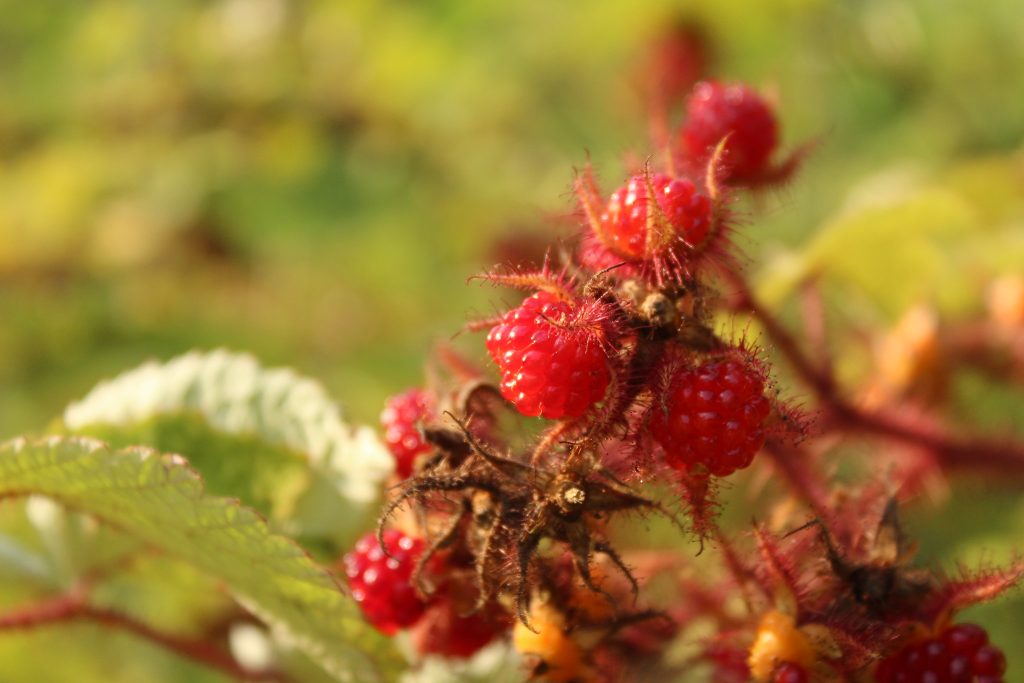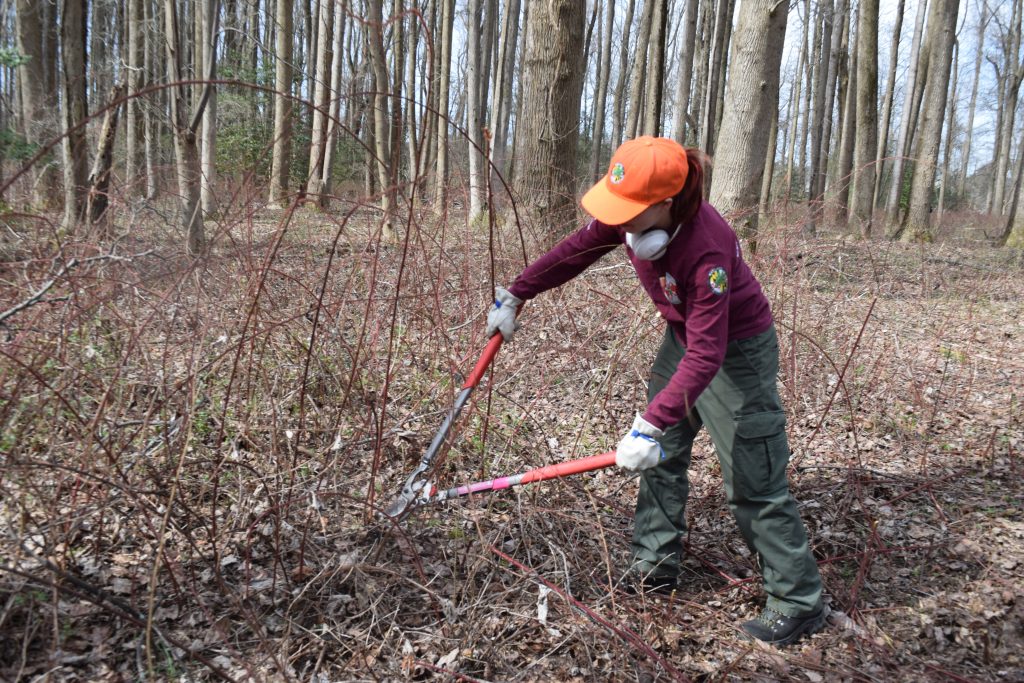The plant is widespread in Maryland, but eating their fruit can help stem their growth

Wineberries are known for their bright red color and sweet, slightly tart taste. Photo by Anna Paff
In the summer, spots of red begin to appear in the forests of Maryland.
Wineberries pop up every year, and it’s an increasingly common tradition in the area to pick these bright red, raspberry-like fruits from forests and trails. Their sweet, somewhat tart taste makes them a sought-after ingredient in baking or cocktail recipes, or they can be a quick snack, pulled straight from the bush.
They’re also highly invasive, and experts and plant managers are trying to balance the species’ delectability with their harm to local ecosystems.
For Maryland Department of Natural Resources staff who do a lot of work in invasive plant management, the wineberry’s taste can be a tool for its control.
“It’s a message that I would never give for any other foraging situation, but in this specific circumstance, over-harvest it,” said Sarah Hilderbrand, a senior restoration specialist.
She encourages people to “pick as many as you can,” because each berry consumed is one less that’s going back into the ecosystem to become seeds for new wineberry plants.
Still, it’s not really an invasive species we can eat to eradication. Wineberry also spreads by tip rooting, where the plant’s canes arch over and reach the ground again, growing roots there and forming another plant.
Alexis Mowery, a natural resource planner with the department, is looking to organize “Pick and Pull” events for wineberry. Residents who sign up will learn how to identify wineberry and get hands-on experience in pulling out the plant—after they’ve harvested the fruit to take home.
“The emphasis is to go out and do this fun thing, but then also give back to nature and pull out this invasive plant,” Mowery said.
Wineberry plants are identifiable by their hairy, thorny red stems, as well as their red buds, which are not found on native blackberries and raspberries, said Mikaela Boley, a principal agent associate with the University of Maryland Extension specializing in native plants. They don’t flower in their first year, but in their second year they produce fruit from June to the end of the summer.
Native to Asia, wineberries were brought to the U.S. in the 1890s as breeding stock to hybridize with cultivated raspberries. The plant eventually spread into the wild and is now endemic in most states east of the Mississippi River.

Reports of wineberry in the Maryland Biodiversity Project. The reports don’t directly represent abundance, but show when people have reported wineberry. Image courtesy the Maryland Biodiversity Project
Their quick growth and shade tolerance allow them to overtake areas and crowd out native vegetation, including native brambles—or blackberries and raspberries. Because they self-fertilize, they also don’t support bees and pollinators in the way that local brambles do, Boley said.
Like other invasive species, wineberry find success by having a different growth period than native plants, Mowery said. They tend to come up a bit earlier and last a little longer, giving them an advantage over native competitors.
However, this quality can also help in their management, as they’re easy to detect early in the season before native plants start to reestablish.
If landowners find wineberry on their property, Boley recommends pulling it out or at least cutting it back near the base with long-handled loppers and monitoring it, then cutting it back again whenever you see more growth. This can at least slow the spread and drain the plant’s energy.
In park land or someone else’s property, it’s best to notify park staff or the landowner where the wineberry was found, or ask for permission to remove it, Mowery said. Professional staff often use chemical controls, but either pulling or cutting back the plant can be helpful.
“Acting early when you first see the invasive in an area gives you the best chance to keep it out,” Hilderbrand said.
The wineberry’s troublesome tenacity doesn’t end when it’s out of the ground though—if cuttings have contact with the soil, they’ll reestablish roots. So Mowery cautioned wineberry weeders to make sure they remove and dispose of cuttings.
As much as removal is a priority, plant managers have another more basic concern: that people don’t plant more of them.
The University of Maryland Extension’s Home & Garden Information Center answers questions residents have about plants. Jon Traunfeld, the center’s program director, said they’ve had people reach out and ask about planting wineberry in their own gardens. “We definitely don’t want to encourage that,” he said.
Boley said those who appreciate the taste of wineberries don’t have to worry about losing access to the fruit. Even if invasive control can help to manage the species better, the plant is now firmly established in the state.
“There are always going to be more wineberries to pick,” she said.

Azalin Rothwell, a Conservation Corps member at Merkle Wildlife Sanctuary, cuts a wineberry shrub in the Corcoran Environmental Study Area in Sandy Point State Park. Wineberries have red stems covered by dense, often soft thorns. Cutting them near the base helps slow further growth. Photo by Joe Zimmermann, Maryland Department of Natural Resources.
By Joe Zimmermann, science writer with the Maryland Department of Natural Resources
